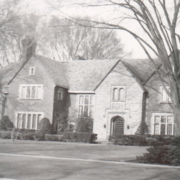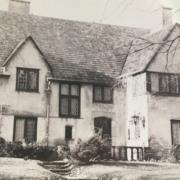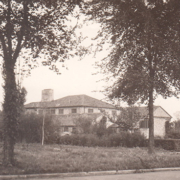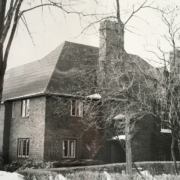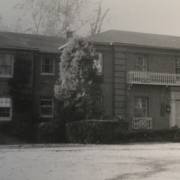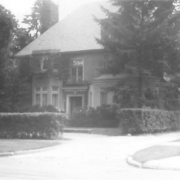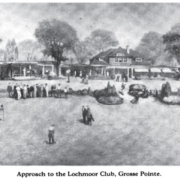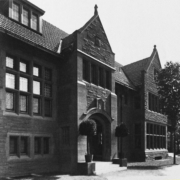Historical Architecture of Grosse Pointe – 1012 Three Mile
Last week we presented one of Leonard Willeke’s most prominent projects, 22 Webber Place. The grand estate was completed in 1927, for Oscar Webber, General Manager of Hudson’s Department Store.
This week we head to another of Leonard Willieke’s acclaimed homes – 1012 Three Mile Drive – completed in 1929, for Raymond J. Purdy, an auto accessories and windshield manufacturer.
Throughout the 1920s, Leonard Willeke was known for designing fine residential work for wealthy clientele. His work includes some of the most magnificent mansions in Grosse Pointe, located on some of the most exclusive streets – Lake Shore Drive, Three Mile Drive, Balfour, Berkshire, and Buckingham.
1012 Three Mile Drive, commissioned by Raymond Purdy, ultimately came via Willeke’s work on the mansion for Oscar Webber. Through his dealings with Webber, Willeke became acquainted with William A. Petzold, secretary and treasurer of the J. L Hudson Company. Petzold subsequently hired Willeke to design a fine Tudor residence, and the garden – located at 1010 Three Mile Drive – completed in 1927. Raymond Purdy had purchased the lot adjacent to Petzold. Admiring the Petzold home and not having decided upon an architect or a builder, Purdy was referred to Willeke by the Petzold’s. Source: Leonard B. Willeke, Excellence in Architecture and Design by Thomas Brunk.
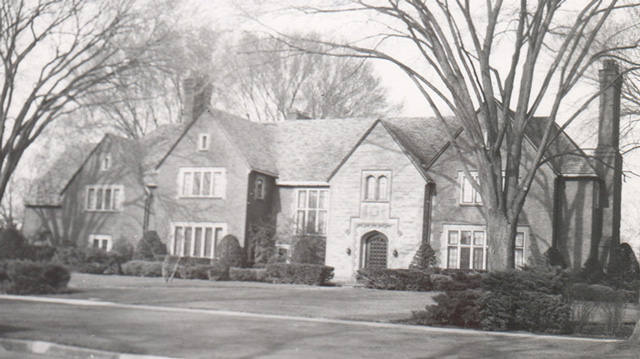
It is reported Willeke acted as both architect and building superintendent on the project. He was also commissioned to design the garden. Brunk, in his book, explains ‘the Petzold and Purdy residences have similar floor plans and massing, yet they evoke separate historical associations because of the different exterior materials and treatments. The Petzold residence calls to mind an Elizabethan Country House. On the other hand, the Purdy residence is indicative of a Tudor mansion. Both houses have a driveway portal cut through them, giving the impression of an interior courtyard and adding to their historical character’. To present the similarities of the adjoining properties, the first photo below is of 1010 Three mile (the William Petzold residence), the second is of 1012 Three Mile (the Raymond Purdy residence) – courtesy of Leonard B. Willeke, Excellence in Architecture and Design by Thomas Brunk.
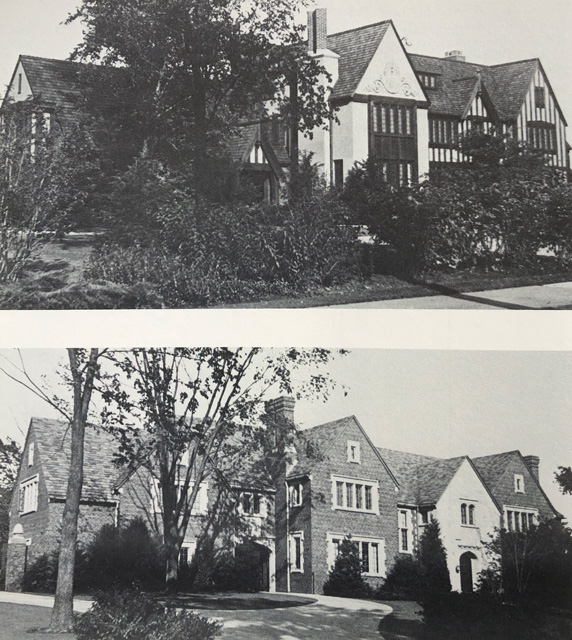
1012 Three-mile Drive is an elegant 3-story 6,400 sq ft Tudor home that was once located on a double lot. The exterior features finely laid brickwork, ashlar (masonry made of large square-cut stones), and beautiful carved limestone. The property has intricate detailing inside and out, with exquisite craftsmanship around the front door. Below is an historic photo of the exterior: courtesy of Leonard B. Willeke, Excellence in Architecture and Design by Thomas Brunk.
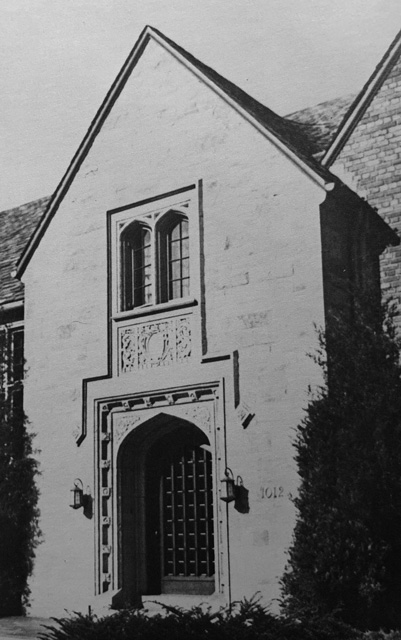
The grand foyer (24’ x 8’) leads through to a wood paneled living room (28’ x 18’), which also features wood paneling, along with a detailed plaster ceiling and a natural fireplace. The library (17’ x 15’) also has striking wood paneling and is home to an additional natural fireplace. Pewabic tile is a stunning aspect to this home, in both the family room and the sunroom. The second floor has five large bedrooms, along with maid’s quarters comprised of a sitting room and two additional bedrooms. The third floor has five cedar closets, while the basement contains a large recreation room (35’ x 14’), including a natural fireplace, wine cellar, a 30’ x 14’ sq ft billiard room, and a dark room.

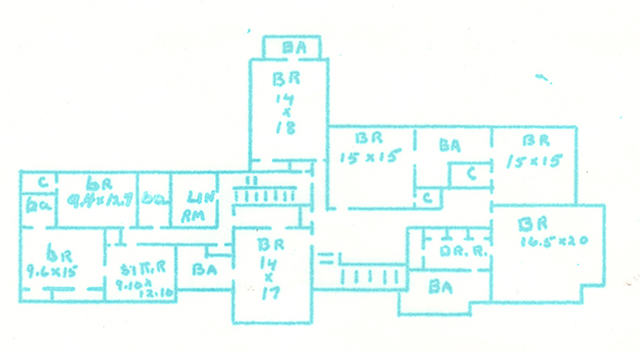
It is believed Mr. Purdy resided in the home until his death in 1965, aged 80 years old. The property was sold in 1966, for $160,000 (around $1.3m today). In 1967, a swimming pool was built on the 100’ x 250’ sq ft second lot. From our files we can confirm, in 1975, the second lot (with the pool) was listed for sale for $25,000 (around $125,000 today). The shape of the lot allowed a house to be built at the front of the lot so that the pool could become part of the new property. At the time 1012 Three Mile Drive was also listed for sale. After the sale of the second lot (with the pool), this became the location of 1014 Three Mile Drive, completed in 1988 – the pool still exists as part of this residence today.
It is reported that 1012 Three Mile Drive was one of Leonard Willeke’s last major commissions prior to the great depression. During the depression, fine residential work came to a halt. In 1930, Willeke suffered financial devastation. His income, in 1930, was only half that of the previous year, and he was virtually without income during the following three years. After a few years struggling to find work, and losing his own home at 1100 Berkshire, Willeke decided to try his hand at designing defense housing thanks to the rising demand for working class housing in Detroit because of World War II. He also received numerous remodeling projects for residences in Grosse Pointe, along with several smaller commissions.
Despite working on smaller projects with tighter budget constraints it is believed Willeke’s enthusiasm did not diminish. He created homes across a broad architectural spectrum, from Colonial through to a typical English Cottage style, adding a fresh and innovative flair to his projects. As an accomplished all-round designer Willeke, during the 1940’s, turned his attention to landscape design. Having already designed the garden at 745 Balfour (in 1927) and the gardens at 1010 and 1012 Three Mile Drive, Willeke was hired for numerous landscape projects in Grosse Pointe. Through research compiled by Thomas Brunk for his book, we understand Willeke worked in collaboration with landscape architect F. Bruce Winkworth on several Grosse Pointe homes. This included – designing the gardens and a fountain at 226 Provencal, adapting an antique wellhead into a fountain at 114 Lothrop, along with creating an elaborate rose garden and terrace with a fountain at 315 Washington Road.
1951, marked the end of Willeke’s professional career. Throughout his retirement Willeke continued to express the same enthusiasm for design as he had displayed during his extensive career. He died aged 86, in July 1970. According to Thomas Brunk ‘his passing was virtually unnoticed by the architectural profession’. However, many years later, after his death, Leonard Willeke finally gained the recognition he deserved. Research from Thomas Brunk states that after Mrs. Willeke’s death in 1981, her husband’s architectural library of more than four hundred volumes and 2,600 photographs was donated to the University of Michigan College of Art and Architecture Library to form the ‘Willeke Collection’. In 1983, the University of Michigan (Taubman College) created an annual Willeke Design Prize, to promote excellence and innovation in architectural design.
Leornard Willeke’s architectural contribution to Grosse Pointe can still be seen today – receiving the recognition he thoroughly deserves – including the beautiful home he created for Raymond Purdy, 1012 Three Mile Drive.
*Photos courtesy of the Higbie Maxon Agney archives unless stated.
Written by Katie Doelle
Copyright © 2021 Katie Doelle

